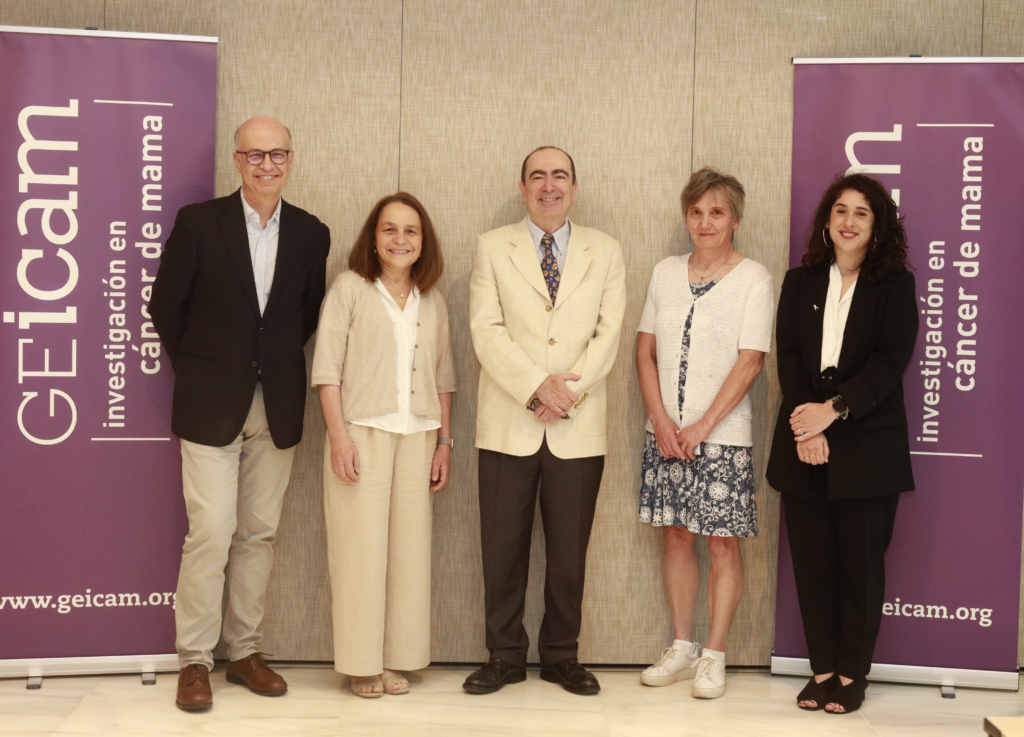
Fatima Of The Kingdom
There is increasingly solid data in breast cancer surgery to affirm that, other things being equal, conservative surgery plus radiotherapy provides improved overall survival and presents better outcomes for patients than a mastectomy. This has been pointed out by the Dr. José Ignacio Sánchez Méndezsurgeon at the La Paz University Hospital in Madrid during the Geicam Annual Review of Advances in Breast Cancer (Ragma), organized by the Geicam Breast Cancer Research Group, which was held this Thursday in Madrid.
“Many surgical gestures do not contribute anything, we can perform surgeries that do not benefit the patients. We have to convey that mastectomy is not the truth for all patients, we cannot apply it to the general population. The latest advances have shown that it is always better to perform conservative surgery plus radiotherapy than a mastectomy“, defended Dr. Sánchez.


“We have to convey that mastectomy is not the truth for all patients, we cannot apply it to the general population”
Likewise, he has pointed out that the ICE3 study demonstrates how ““A cold ablation technique allows tumor destruction to be performed in consultation through an incision of less than two millimeters, as a definitive surgical treatment for a selected group of patients.”
Furthermore, Sánchez has detailed that new research points to the no need to complete the axillary dissection when there are less than three sentinel lymph nodes affected, in scenarios that are little represented or not contemplated in it, such as mastectomy or periganglionic infiltration.
“Many surgical gestures do not contribute anything, we can perform surgeries that do not benefit the patients”
AI in screening
Artificial intelligence has identified 99.3% of breast cancers detected by screening as positive, according to a Norwegian study that was presented during Ragma, it can reduce the workload of radiologists without reducing the quality of the screening program.
The study carried out in Norway with 661,695 digital mammographic examinations performed on 242,629 women, the data set included 3,807 screening-detected breast cancers and 1,110 interval breast cancers (those that are diagnosed between a routine screening mammogram that appears normal and the next mammogram).
Artificial intelligence has identified 99.3% of breast cancers detected by screening as positive
“When the exams performed were divided into two and the artificial intelligence used 50% as a threshold for low versus high scores, 99.3% of the breast tumors detected by screening (3,781 of 3,807) were identified as positive and 85.2% of interval breast cancers (946 of 1,110). On the other hand, 17% of the false positive results (2,725 of 16,040) were considered negative,” He explained during the meeting the Dr. Solveig Hofvindhead of the Breast Cancer Screening Section and responsible for BreastScreen Norway at the Norwegian Cancer Registry.
In addition, the use of artificial intelligence in mammographic screening can lead to earlier detection of breast cancers. Thanks to these advances, it is expected that artificial intelligence will soon make it possible to personalize screenings, but first it is necessary to carry out more studies that provide the evidence necessary to implement it safely.
“We also need to maintain the interpretation skills of radiologists and establish benchmarks to monitor the effect of using artificial intelligence as a decision support, as an independent reader or to classify women according to their risk score.“said Dr. Solveig Hofvind.
Advances in hereditary breast cancer
Professor of Epidemiology at the Institute of Cancer Research and Imperial College in London, Montserrat García-Closashas discussed in Ragma about recent very large-scale studies that allow us to know the risk of developing breast cancer much more precisely than before in women with mutations in high-risk genes: such as BRCA1 and BRCA2.
These studies are identifying additional genes with high-risk mutations, so they represent a great improvement in risk counseling in women with hereditary cancer. “Now we know with much better precision what the risks of these mutations are and we have also been able to confirm genes that are not safe”García-Closas highlighted.
“Now we know with much better precision what the risks of these mutations are and we have also been able to confirm genes that are not safe”
The professor has also talked about the polygenic risk score (PRS) that can improve the ability to predict the risk of breast cancer, especially when combined with traditional risk factors such as family history, hormonal and reproductive factors, and density. breast on a mammogram.
Thus, PRS could lead to personalized risk-based screening programs rather than relying solely on age-based guidelines. “Currently, clinical trials such as Wisdom in the US and MY-PEBS in Europe are evaluating the practical benefits, costs and effectiveness of using polygenic risk indices to improve the quantification of individual risk and results are expected in the next five years.” years”he stated.
“Clinical trials such as Wisdom in the US and MY-PEBS in Europe are evaluating the practical benefits, costs and effectiveness of using polygenic risk indices to improve the quantification of individual risk”
Early identification of people at high risk for hereditary breast cancer allows for targeted interventions, which may include more frequent and earlier screening, preventive surgeries, and risk-reducing medications. These measures can help significantly improve survival rates.
Furthermore, early identification and intervention would result in long-term economic savings by reducing the need for costly treatments associated with advanced cancer and its complications.
Geicam and research
The different Ragma sessions cover relevant aspects in the approach to breast cancer, as well as contributions from the Group itself. “For example, the Geicam studies have allowed us to distinguish which subgroup of triple negative patients really benefit from treatment with capecitabine, which represents another step towards the individualization of medicine.“explained the coordinator José Enrique Alés Martínez.
Other advances in this regard have been the incorporation of agents that have a preferential action on patients with tumors with specific alterations, such as inavolisib for mutations in PIK3CA or elacestrant for mutations in ESR1. Some learnings are more subtle, for example, as data accumulates from less frequent subgroups of patients with breast cancer or with a predisposition to develop it, the real risks of populations can be better established and, in the future, at an individual level, explains the Dr. Alés. For example, the real risk of developing breast cancer for carriers of pathogenic mutations in BRCA2 is now estimated to be 15-20% lower than previously thought.

